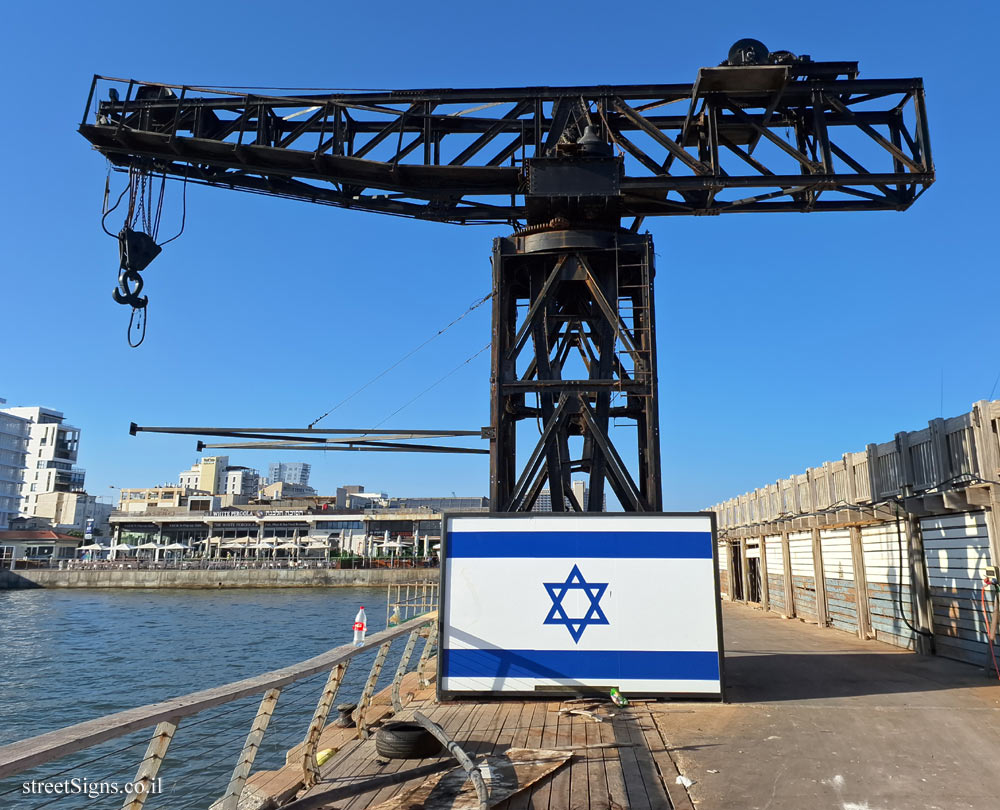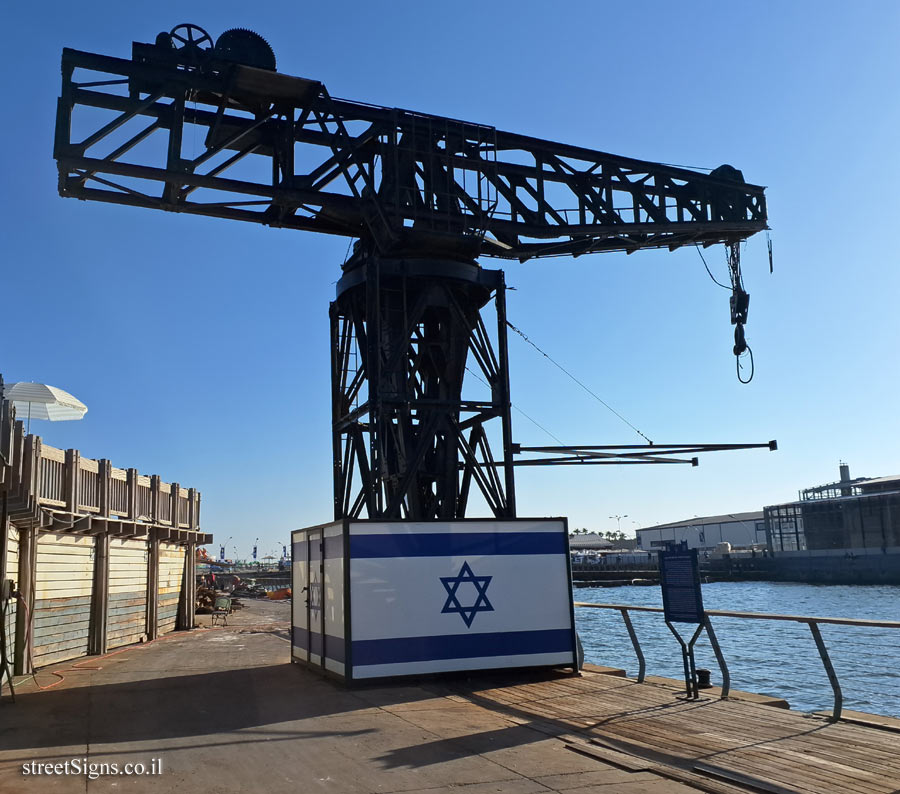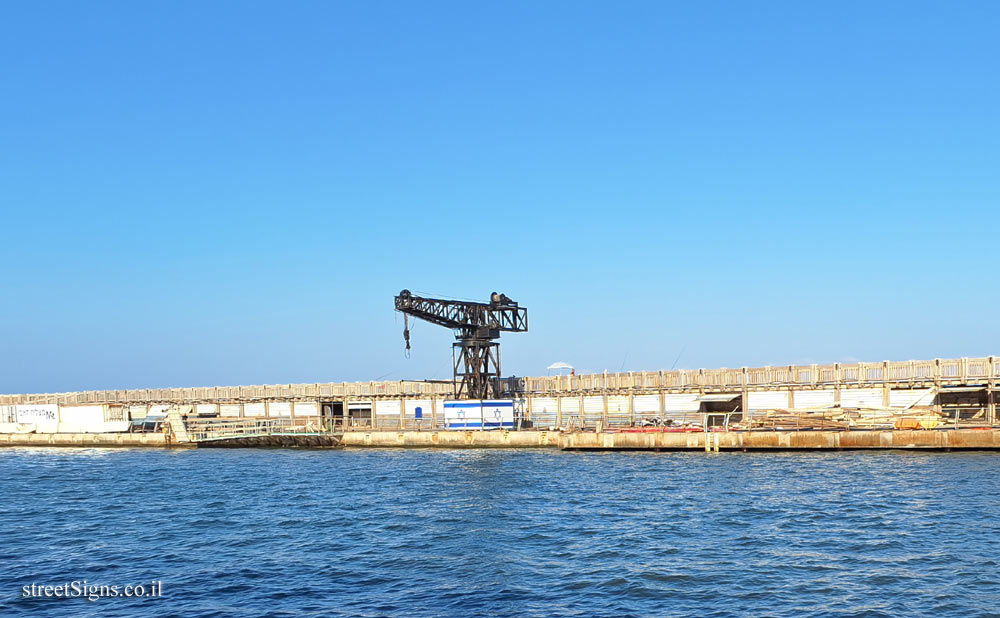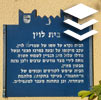The sign is rectangular but its head is designed according to the silhouette of the old building of the Gymnasia Herzliya, which serves as a logo of the Council for the Preservation of Heritage Sites in Israel
The crane was photographed on the same day
 Click for a larger image
Click for a larger image  Click for a larger image
Click for a larger image And as seen from the promenade of the Tel Aviv port which is in front of Pier
 Click for a larger image Translation of the text on the sign
Click for a larger image Translation of the text on the sign:
Symbol of the Council for the Preservation of Israeli Heritage Sites
Tel Aviv port symbol
The symbol of the city of Tel Aviv
The historic crane of Tel Aviv port The crane, model "Patish" (hammer), was built in 1938 as part of the expansion of operations in the port and to optimize its operations. The advanced engine and electrical system were brought from Europe, while the iron frame was built in Israel. During all the years of the port’s activity (until its closure in 1965), the crane was used to unload and load goods and heavy cargo weighing 25 tons or more, and was the only one of its kind operating in Israel.
The crane stood out in its activity, especially during the Second World War, it was used, among other things, to lift vessels to the shipyard, and it also met the needs of the British Army. The crane is a testimony to the system of cranes that operated in the port, which were small in size, loaded the crates of citrus fruit for export, the sacks of cement that were used to build the country, and the crates of weapons and ammunition that were transferred to the Hebrew Defense Forces during the War of Independence. Over the years, the crane also gained the status of a cultural icon, and starred in Nachum Gutman’s paintings, photographs and films, and at sea. Among other things, he can be seen in "Metzitzim" and "Lul".
Over the years, the steel beams of the crane were damaged by the salt and the strong sea winds, and its stability was undermined to the point of actual danger of collapse. As a result, and on the occasion of the Tel Aviv Port’s 70th anniversary celebrations, it was decided at the Otzer Mifalay Yam Company, the Tel Aviv Port Authority, to announce a project to restore the crane and return it to an active state. The restoration and restoration was carried out by Ran Hadvati, a mechanical expert and coordinator of the preservation of historical technologies at the Site Preservation Council, in cooperation and coordination with the port administration team. The crane is being restored with the funding of the ’Otzer Mifalay Yam’ company and a large financial donation from the engineer Ze’ev Gerlitz in memory of his father Yitzhak Gerlitz, one of the builders of the crane and the port.
This donation made it possible to restore the mechanical systems so that the crane could rotate and lift loads as it used to lift. The renovation and restoration of the mechanical systems was carried out by Gideon and Sarah Yaniv’s metal factory. The complex conservation project was also contributed by Hajaj brothers’ locksmith, Dodo Zur-Handasa and "Mul Harer Projects Ltd" company.
70 years after the crane was first activated, one of the distinctive symbols of the port and of the city of Tel Aviv returned to its natural place on the port pier.

 Click for a larger image
Click for a larger image  Click for a larger image
Click for a larger image  Click for a larger image
Click for a larger image  Click for all signs belonging to Heritage Sites in Israel
Click for all signs belonging to Heritage Sites in Israel
 1.73 Km |
1.73 Km |  3.6 Km |
3.6 Km |  3.6 Km |
3.6 Km |  3.67 Km |
3.67 Km |  3.72 Km
3.72 Km